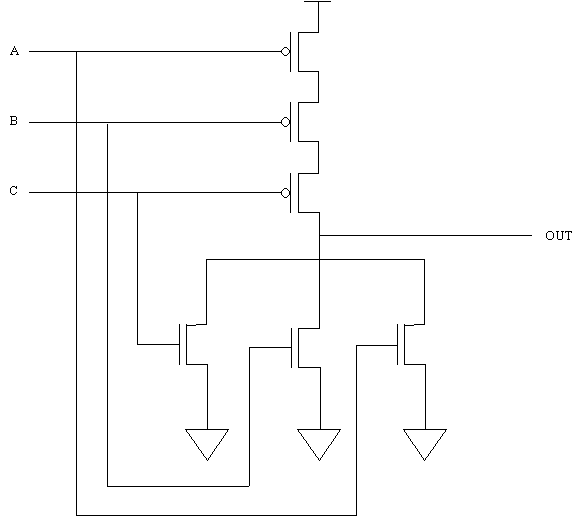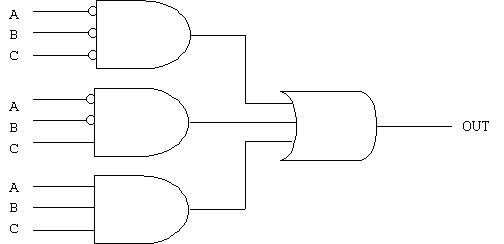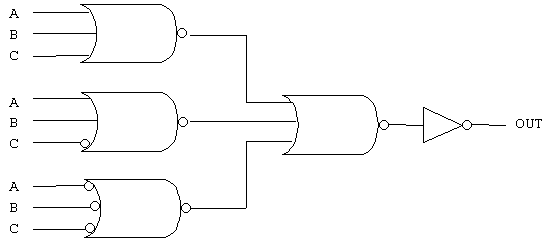
Homework 2 Solutions
Problem 1
|
|
|
|
|
|
|
|
|
|
|
|
|
|
|
|
|
|
|
|
|
|
|
|
|
|
|
|
|
|
|
|
|
|
|
|
|
|
|
|
|
|
|
|
|
|
|
|
|
|
|
|
|

b)

c)

Problem 3
a) There are be a total of 26 = 64 outputs.Problem 4b)
c) A multiplexer with 27 different input lines will need 5 select line since 24 = 16 < 27 < 25 = 32.
a)
|
|
|
|
| 0 | 0 | 0 |
| 0 | 1 | 0 |
| 1 | 0 | 1 |
| 1 | 1 | 0 |
b)Problem 5c) Since the set of gates {AND, NOT} is logically complete, we can prove that the set {NEWOP, NOT} is logicaly complete if we show that we can construct circuits that are logically equivalent to AND and NOT, using only gates from the set {NEWOP, NOT}. The NOT, of course, is taken care of by the NOT in {NEWOP, NOT}. We can construct a circuit that is logically equivalent to AND, as follows: A AND B is equivalent to A NEWOP NOT B:
|
|
|
|
|
|
|
|
|
|
|
|
|
|
|
|
|
|
|
|
|
|
|
|
|
|
|
|
|
|
|
|
|
|
|
|
|
|
|
|
|
|
|
|
|
Problem 6
a) The total number of D-latches that would be used to construct such a memory is 216 * 24 = 1572864
b) The address space is number of uniquely addressable location = 216 = 65536